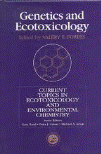Papers in the Biological Sciences

Valery Forbes Publications
Document Type
Article
Date of this Version
1986
Abstract
Experiments combining fluorescent particle tracer techniques with time-lapse video recording demonstrated that the gastropod Hydrobia truncata decreases crawling rate on patches rich in chlorophyll-a, while maintaining a constant feeding rate as sedimentary chlorophyll-a content varies. In contrast, H. truncata decreases feeding rate but does not change crawling rate upon encounter with patches of recently egested sediment. Depression of feeding rate is less pronounced if the egested material is enriched in chlorophyll-a. For deposit feeders inhabiting highly reworked sediments, the majority of available material may consist of sediment that has been recently egested. For an animal that responds negatively to recently egested sediment, the pool of material available for ingestion may be much reduced. The ability to independently control rates of energy input and expenditure in response to rapidly changing environmental conditions may enable an organism to control net energy gain over short time periods.


Comments
Published in MARINE ECOLOGY - PROGRESS SERIES 33 (1986), pp. 287-294. Published October 27, 1986. Copyright 1986 Inter-Research. Used by permission.